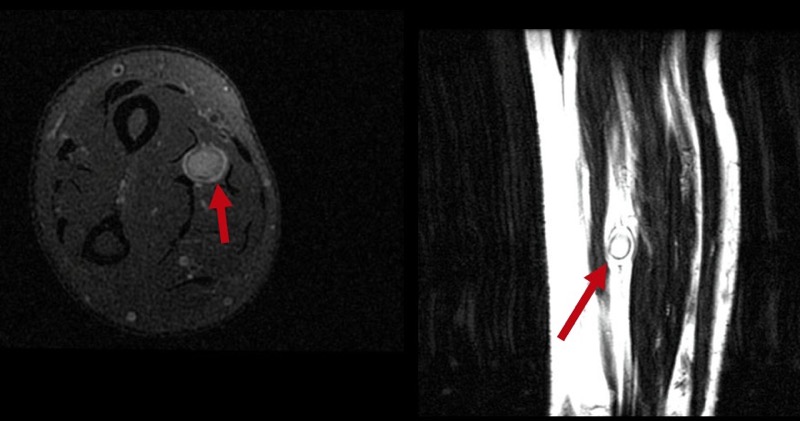Tumors
Tumors of the Brachial Plexus and Peripheral Nerve
Tumors of the brachial plexus or other nerves are rare. However, they can be very disabling, and can even transform to malignant tumors. Therefore, it is extremely important to make an adequate diagnosis and treatment by a medical team with experience in peripheral nerve.
VOID
Symptoms
Depending on the location and type of tumor, one or more of the following symptoms may occur:
- Loss of strength or complete absence of mobility in one or more joints.
- Complete or partial loss of sensation. It can be a feeling of “numbness, “padding,” or even not feeling the affected areas.
- Neuropathic pain in the affected limb. This pain is usually described as burning,
shooting or electric shock-like pain, with different intensity and duration in the
affected limb. It responds poorly to regular pain relievers. - Lump or foreign body can be experienced.
- Fever or weight loss / appetite: more associated with malignant nerve tumors (known as MPNST ‘malignant peripheral nerve sheath tumors’).
As a rule, benign tumors tend to have fewer symptoms than malignant ones.
Diagnosis
The diagnosis is based on:
- Clinical history: information told by the patient. For example: a loss of strength from years of evolution is usually associated with a benign tumor. A more rapidly evolving loss of strength may be associated with a more aggressive tumor.
- Physical examination: assessment of strength and sensation in the affected limb.
- Electrophysiological studies: help determine the type and location of the tumor in the nerve.
- Imaging tests: Ultrasound and MRI are two very useful tests to locate tumors. They can also suggest a diagnosis and help plan the surgery.
The definitive diagnosis of the type of tumor is obtained with the histological analysis (performed by the pathologist), for which it is necessary to remove part of the tumor (biopsy) or the entire tumor.
Types of peripheral nerve tumors
- Schwannoma: it is the most frequent benign nerve tumor. It does not usually present a motor or sensory deficit. Its removal does not usually leave a functional deficit.
- Neurofibroma: it is a benign nerve tumor. They may be associated with neurofibromatosis type 1 disease. It is the most frequent tumor in the brachial plexus. Its removal may leave functional deficits.
- Intraneural ganglion: they are less frequent and benign. It is produced by the entry of synovial fluid from a joint into the nerve, through a joint branch (connection).
- Malignant tumors (MPNSTs – ‘malignant peripheral nerve sheath tumors’, sarcomas, metastases, etc.): these tumors tend to grow rapidly, are hard, produce functional deficits (loss of strength or sensitivity) and pain.
Treatment
As a rule, tumors must be removed to know the diagnosis and to perform the appropriate treatment. This treatment is different in benign tumors (they must be excised with the minimum possible sequelae) and malignant tumors (required a more radical resection). In addition, malignant tumors often require other complementary treatments aside from surgery (radiotherapy / chemotherapy).
Sometimes it is necessary to perform a biopsy before the definitive resection to know if the tumor is benign or malignant. Although certain tests such as magnetic resonance imaging may suggest the type of tumor, a biopsy allows a more precise diagnosis. Risk vs. benefit of performing a tumor nerve biopsy, must be carried out by a team with experience in peripheral nerve surgery.

MAGNETIC RESONANCE IMAGING (MRI) STUDY WITH A NERVE TUMOR
Example of MRI with a tumor (marked with an arrow) on the median nerve. This patient had a high degree of pain in the arm, which disappeared completely after its removal.
WHAT TO DO IF YOU SUSPECT A NERVE TUMOR?
- Visit a Brachial Plexus and Peripheral Nerve Specialist: you should find a specialist team as soon as possible.
2. Rehabilitation is essential. Systematically perform the exercises recommended by your specialist. Even though the nerve regenerates after the tumor excision, and the muscle works again, you will not be able to move the affected limb if the joint is stiff and without mobility.
3. Live healthy. Do not smoke (tobacco has shown delayed nerve recovery) or take other toxic substances (alcohol). Eat a balanced diet.
4. If you experience pain, see a pain specialist. The pain usually improves over time after the excision of the tumor. However, it can be very disabling and complex to treat. Visiting a pain specialist could help to improve your quality of life.
